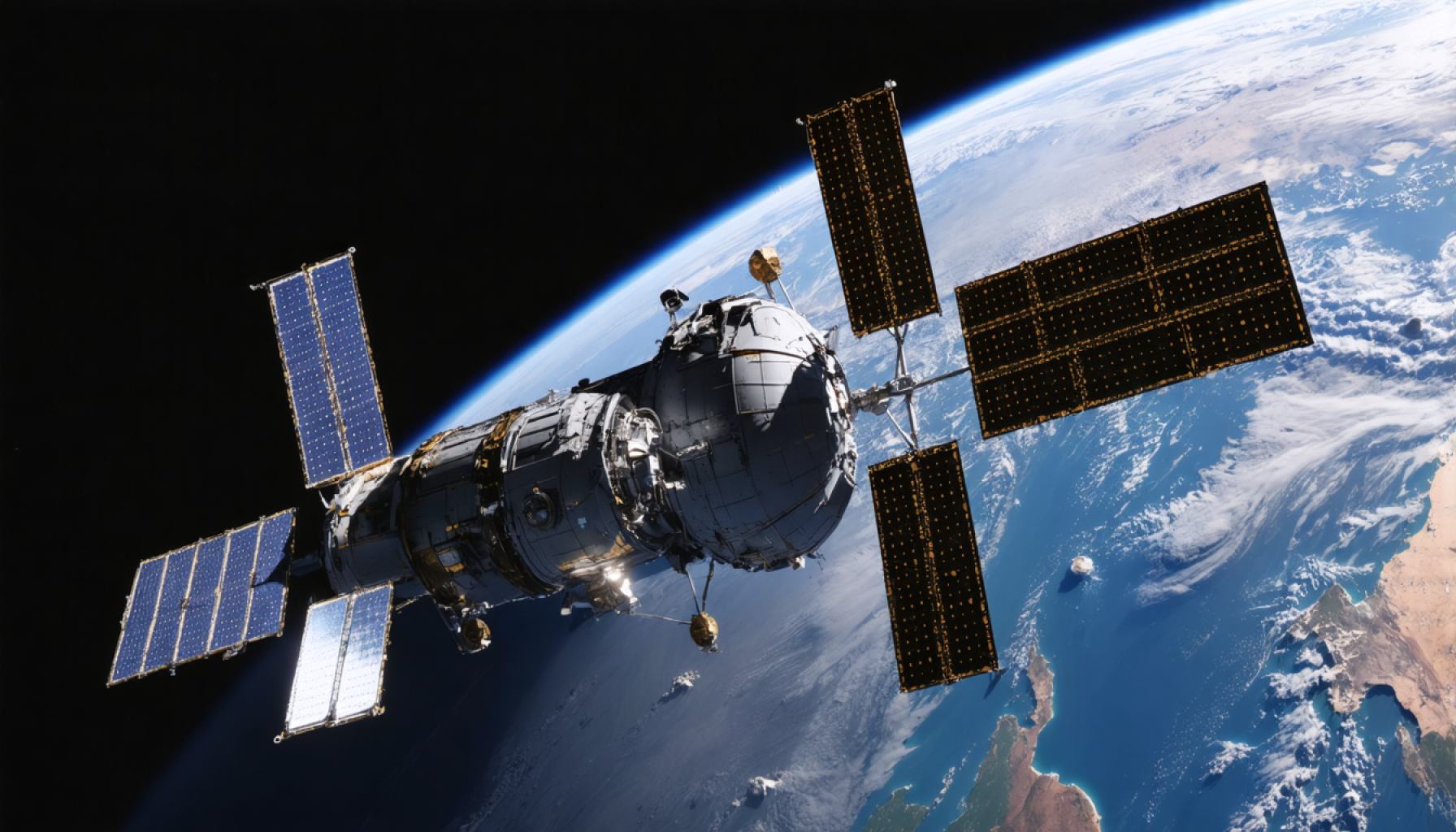- NASA is developing technologies to transform human waste into resources for space missions.
- The innovative approach includes converting waste into energy and water, enhancing spacecraft sustainability.
- Hydrogen extraction from waste provides dual benefits: propulsion fuel and water when combined with oxygen.
- Organic waste conversion to nutrient-rich compost supports crop cultivation on the Moon and Mars.
- This shift redefines waste as a renewable resource, highlighting efficiency and sustainability for space and Earth.
- Transforming waste into resources is crucial for reducing dependence on Earth supplies in long-term space missions.
Envision a spacecraft gliding through the starlit expanse of the cosmos, its journey sustained by a most unexpected fuel—human waste. As humanity gears up for ambitious missions to the Moon and Mars, NASA is exploring innovative solutions to the colossal challenge of resource management in space. Forging the path ahead is an astonishingly simple yet potent idea: transforming the very byproducts of human existence into vital resources for survival.
Picture this: a future where waste does not merely dissipate into the void but morphs into energy that propels spacecraft across the solar system. In the closed ecosystem of a spacecraft, every drop, every gram counts. Astronauts must rely on what they can carry, recycle, and recreate. Therefore, tapping into the abundant supply of human waste as a renewable resource is more than a convenient strategy—it’s a potential game-changer.
Why should waste languish unutilized when it can be alchemized into something valuable? Innovative technologies are emerging to transform organic waste into water or even fuel. One promising avenue is extracting hydrogen from waste, providing not only a source of water through the recombination with oxygen but also a propulsion method. This dual use maximizes efficiency and minimizes the need for carrying excessive supplies from Earth—a critical advantage for distant missions.
Beyond propulsion and hydration, turning waste into soil stands at the forefront of endeavors to sustain long-term habitats. By converting organic waste into nutrient-rich compost, astronauts could potentially cultivate crops. This solution taps into the delicate balance of closed-loop ecosystems, offering a lifeline in arid Martian terrains and sterile lunar landscapes, where earthly interventions are few and far between.
Yet, beneath these technological feats lies a more profound narrative—the redefinition of waste. No longer an end state, waste becomes a resource with a cycle as boundless as human ingenuity. This paradigm shift propels not only space exploration but also reverberates back to Earth, hinting at a future where sustainability reigns supreme.
In the race to conquer the cosmos, the transformation of waste into resources might stand as one of humanity’s most innovative advancements. As the final frontier beckons, the question of how we use what we discard could redefine our trajectory, underscoring the timeless value of efficiency and conservation. When it seems the wonders of the universe are reserved only for the grand and the grandiose, it begins with the simplest act of reinvention.
Human Waste: The Surprising Key to Space Exploration
As humanity prepares for ambitious space missions, NASA is turning the once-dismissed byproduct of human waste into an essential resource. With the reality of long-duration space travel comes the need for innovative resource management. Human waste, which traditionally posed a disposal problem, is now seen as a potential boon for space travel.
How Human Waste Could Propel Space Missions
1. Fuel Generation:
Human waste contains elements such as hydrogen, which can be extracted and used as a source of fuel. This hydrogen can be recombined with oxygen to produce water, or even used as a propulsion method. Technologies are being developed to harness these capacities effectively.
2. Water and Propulsion:
By transforming waste into water and fuel, spacecraft can minimize the supplies they need to carry from Earth. This is especially crucial for missions to Mars or beyond, where resupply missions are impractical.
3. Agricultural Use:
Human waste can also be processed to create nutrient-rich compost. This soil substitute can help grow crops in space, providing astronauts with fresh produce during extended missions. Such closed-loop systems are essential for sustainability in barren environments like Mars or the Moon.
Addressing Concerns and Challenges
Biological Safety:
One crucial aspect is ensuring that harmful pathogens are effectively neutralized during waste processing. Advanced waste treatment technologies are designed to ensure that the resulting products are safe for use in closed environments.
Technical Challenges:
Developing reliable, efficient systems to process waste into fuel or water is complicated. These systems must be resilient to withstand the rigors of space travel and remain operational over long periods without breakdowns.
Real-World Use Cases and NASA’s Strategy
NASA’s goals for sustainable long-term human presence beyond Earth require innovations like these. As described by NASA researchers, achieving closed-loop resource cycles can vastly extend mission durations without additional Earth-based resupplies.
Future Innovations and Projections
Industry Trends:
As more private companies enter the realm of space exploration, the pressure to innovate reusable, sustainable technologies increases. Solutions derived from turning waste into fuel or food could also find applications on Earth, reducing landfill reliance and conserving natural resources.
Sustainability on Earth:
These technologies underscore a broader move towards sustainable practices. Waste-to-resource technologies could offer environmentally friendly waste management solutions and inspire similar developments across industries on Earth.
Actionable Recommendations
– Adopt Closed-loop Systems: Whether in space travel or urban settings, exploring closed systems offers potential environmental and logistical benefits.
– Invest in Sustainable Innovation: Both public bodies and private sectors should commit to funding research that explores waste conversion here on Earth.
For more insights into space exploration technologies, explore NASA’s official website: NASA.
Conclusion
The transformation of human waste into essential resources not only holds promise for the future of space exploration but also suggests transformative environmentally friendly practices for Earth. As these technologies develop, the scope of their application will likely expand, redefining sustainability across multiple arenas. By seeing waste as an opportunity rather than an obstacle, humanity takes one more crucial step toward the stars.
